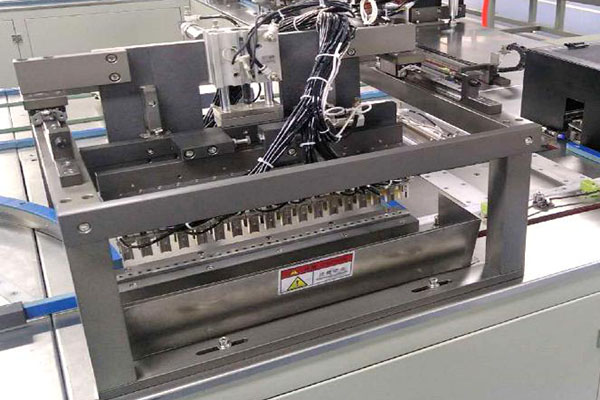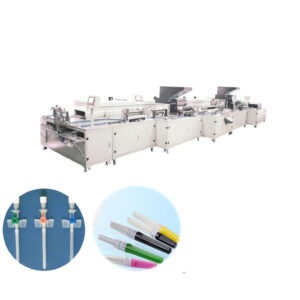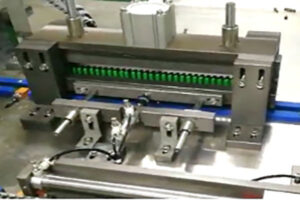Blood Collection Needle Assembly Machine
The Blood Collection Needle Assembly Machine Production Line is a fully automated system designed for the efficient and precise assembly of pen-type blood collection needles. It features easy and safe operation with individual PLC and HMI control, requiring only 3-4 workers to run the entire line. This machine offers a smaller footprint, enhanced stability, and intelligent operation with lower fault rates and maintenance costs.
Description

The Blood Collection Needle Assembly Machine Production Line is engineered for the automated assembly of pen-type blood collection needles. This advanced system provides easy and safe operation with individual PLC and HMI control, requiring only 3-4 workers to operate the entire line efficiently. Compared to other manufacturers, our assembly machine boasts a smaller overall dimension, enhanced stability, intelligent running, lower fault rates, and reduced maintenance costs.
Application
Designed specifically for the production of pen-type blood collection needles.
Production Procedures
- Needle holder loading: Handles the needle holder via a vibrator, placing it on the tooling strip.
- Needle loading: Loads the needle onto the thimble, lifting and positioning it into the needle seat.
- Gluing: Utilizes a Japanese Panasonic servo motor to dispense glue accurately.
- Drying: Dries the glue in a temperature-controlled tunnel.
- Detection of pinhole clogging: Checks for blockages using air pressure.
- Detection of needle burrs: Employs CCD detection to identify and remove burrs.
- Waste removal: Comprehensive removal of waste products.
- Long-needle protecting cover loading: Loads and presses the protective cover.
- Needle reversal: Rotates the needle 180 degrees for siliconization.
- Soft protecting cover loading and pressing: Loads and presses the rubber cover onto the needle.
- Short-needle protecting cover loading and pressing: Loads and presses the short needle cover.
- Finished product: Completes the cycle with the finished product.


Working Station Descriptions
Detailed descriptions of each working station, from needle holder feeding to short-needle cover pressing, ensuring precision and efficiency at every step.
Blood Collection Needle Assembly Machine Advantages
- High Capacity: Produces up to 12,000 pieces per hour.
- High Automation: Optimized process requiring only 3-4 skilled operators.
- Top-Level Detection Devices: Ensures high-quality output using brands like Germany Lenuze and OMRON.
- Intelligent Operation System: Humanized design with PLC and HMI control.
- Servo Motor Control: Ensures precise and smooth movement.
- Alarm Devices: Alerts for failures, material jams, low air pressure, and silicone oil shortages.
- Top Brand Components: Ensures stability and long-term usage.
- High-Quality Structure: Durable and easy to clean, meeting GMP standards.
- Customizable: Options for additional detection features.
Feature and Advantages:
- High Capacity: Efficiently produces 12,000 units per hour.
- Automation: Minimizes manual intervention with an optimized process.
- Top-Quality Detection: Uses high-end detection devices for quality assurance.
- User-Friendly: Easy operation with a humanized design.
- Precision Control: Servo motor control for key parts ensures accuracy.
- Safety Alerts: Equipped with alarm systems for various issues.
- Durable Construction: High-quality steel and stainless steel components.
- Customizable: Options for additional detection features.
























